When NASA wants to purchase equipment, it usually first puts a very detailed specification on paper (similar to the military) that describes all the requirements in detail – regardless of whether it is a rocket engine or a space suit. The requirements are often communicated via a tender – like with the new NASA space toilet, which is also supposed to work on the moon (no, no shit).
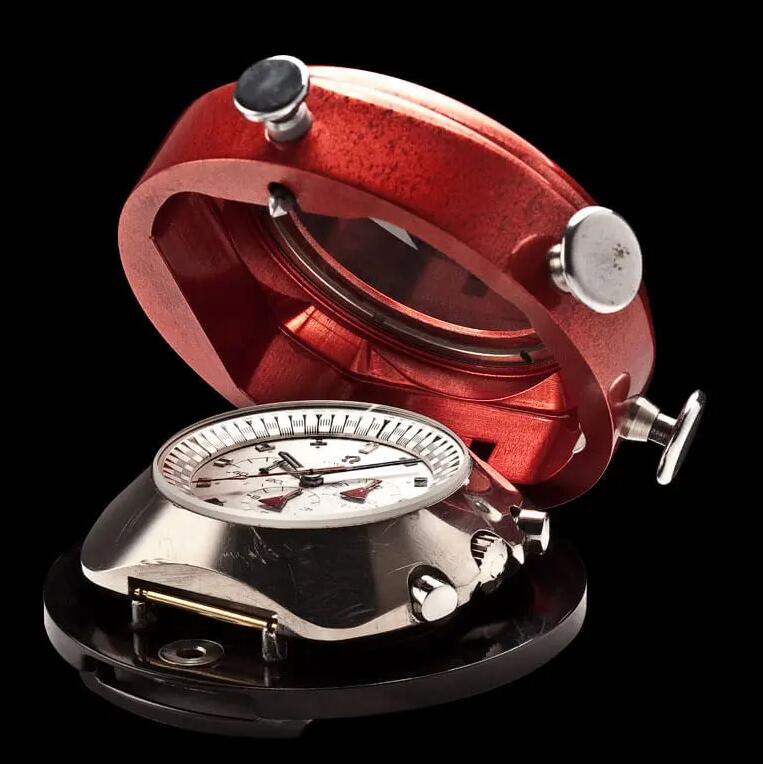
Omega Replica: That’s how the Alaska Project came about
Omega originally developed the Speedmaster in the 1950s, for example to support (earthly) timekeeping in sports and to underline its image as the Official Timekeeper of the Olympic Games. Even though the nickname “Moonwatch” now belongs to the Omega Speedmaster Professional, the classic chronograph was not originally intended to be NASA’s official space watch. The moon landing was a completely absurd idea.
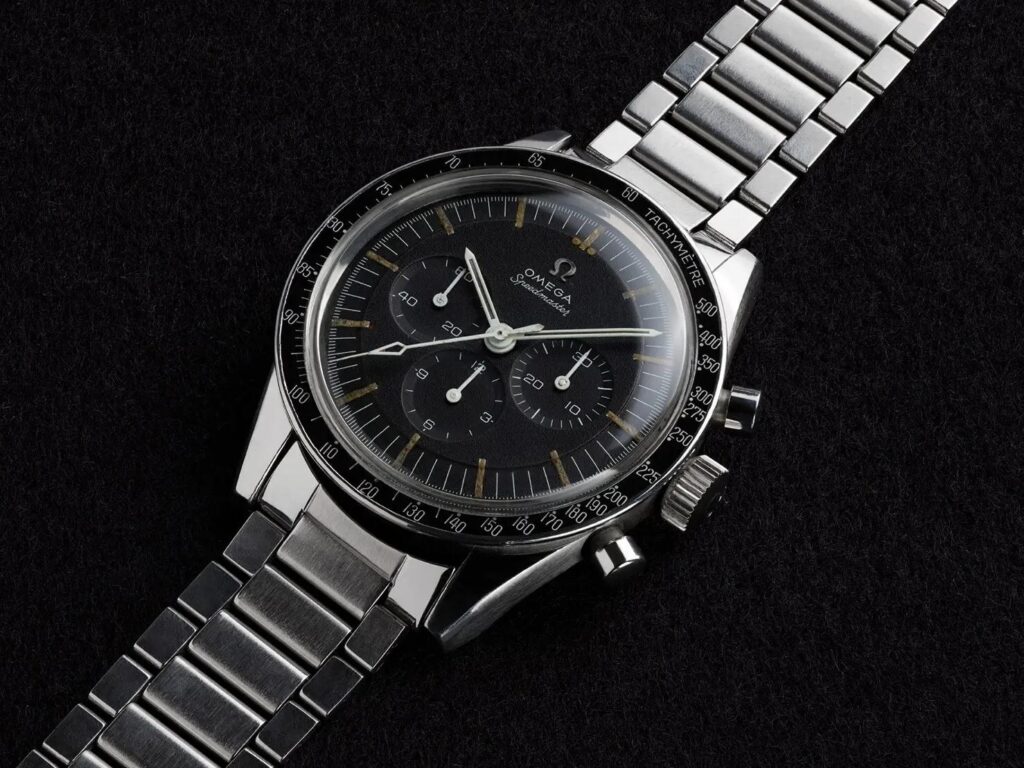
Omega Alaska I Project
The very first prototype, the Speedmaster Alaska I (Ref. 5-003) was developed in 1969, the year of the moon landing – both Neil Armstrong and Buzz Aldrin did not wear the Alaska I prototype on the Apollo 11 moon landing mission, but the series-produced successor to the reference 105.003, the reference 105.012, which is available for everyone to purchase.
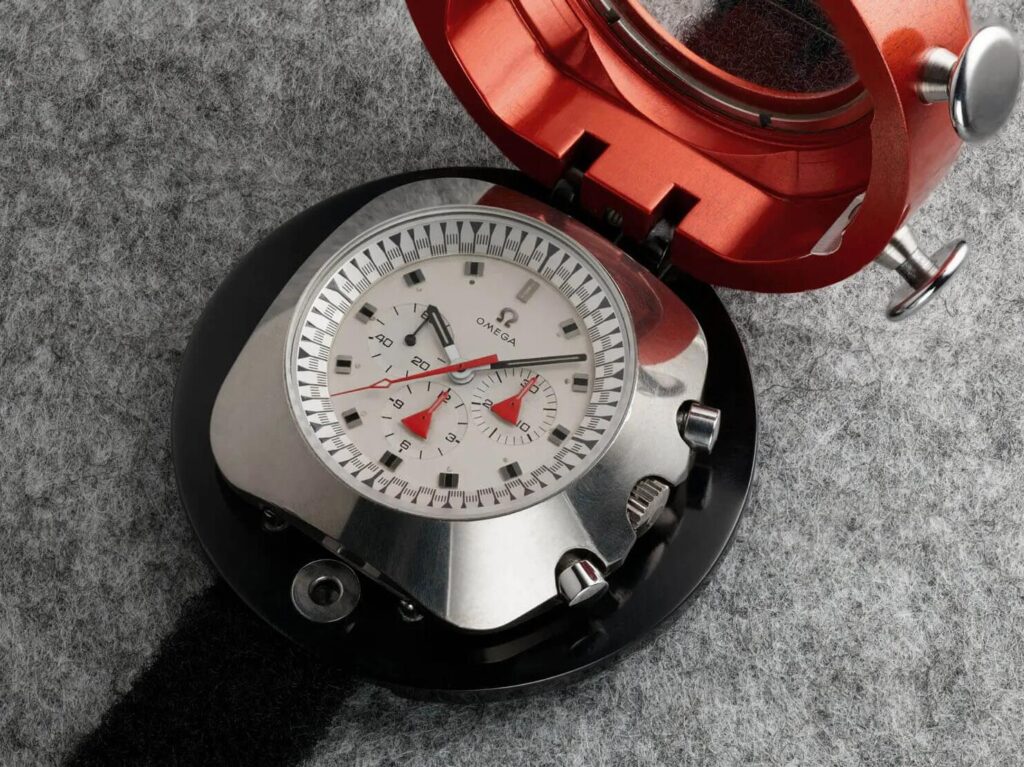
Also eye-catching is the oversized, cushion-shaped case made of titanium, measuring 46 mm in diameter and housing the caliber 861 (successor to the Cal. 321). Today titanium is completely normal in watch production, but back then the particularly light and hard material was a real specialty – it was considered difficult to use in production, which is why military technology had to be used. According to Omega, the Alaska Speedmaster prototype was the first-ever watch to come in a titanium case.
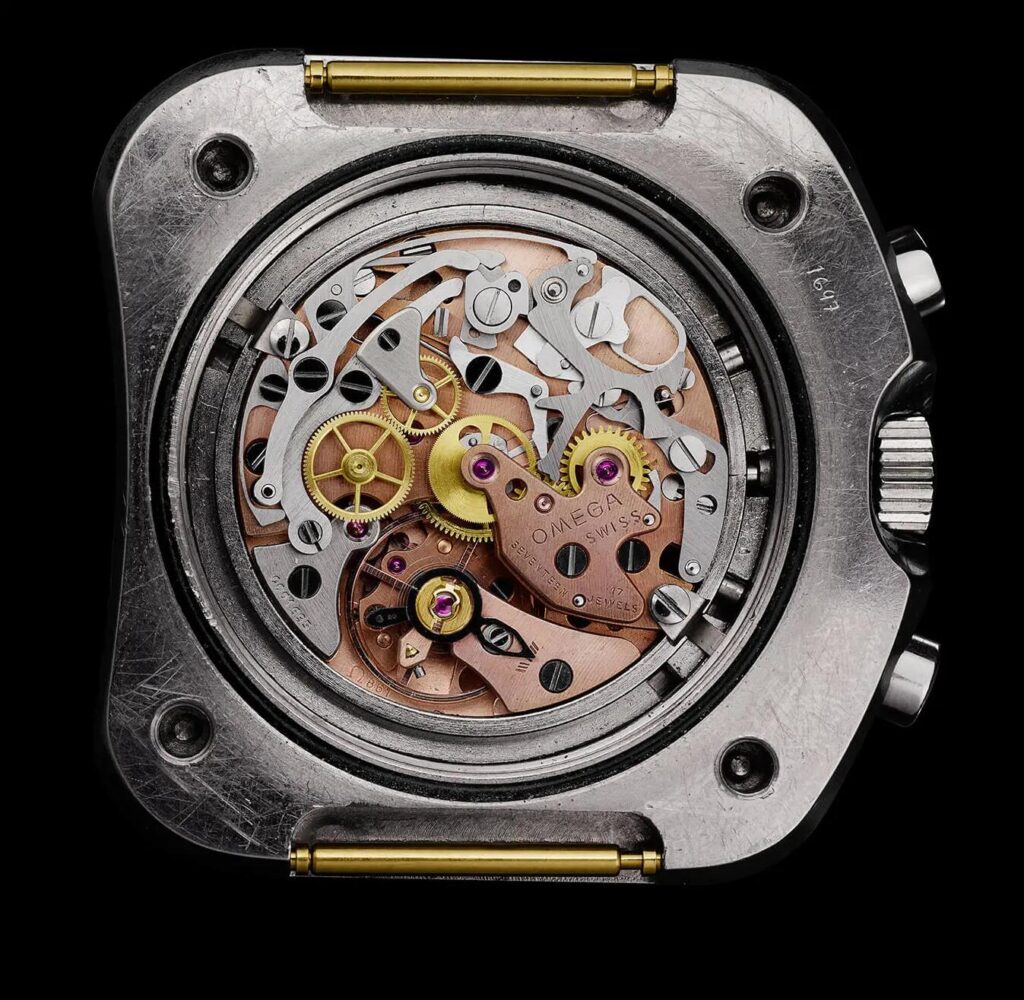
The main, at first glance quite curious, feature of the Alaska I-Speedmaster was a removable outer casing made of red anodized aluminum. This protective coat, also called a thermal shield, should also keep out sunlight and thereby protect the mechanical inner workings from heat. Because remember: Due to the lack of a “real” atmosphere, the temperature differences on the moon’s surface between the day and night sides are extreme: in sunlight it can get up to almost 130 degrees Celsius, in the dark up to -160 degrees Celsius.
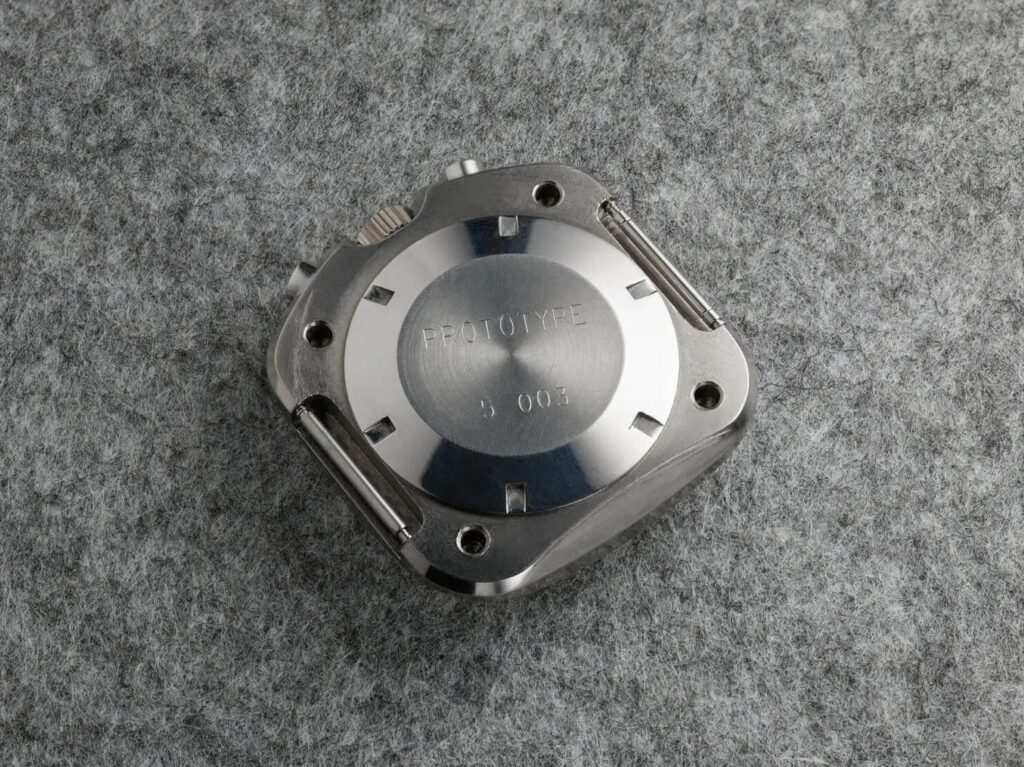
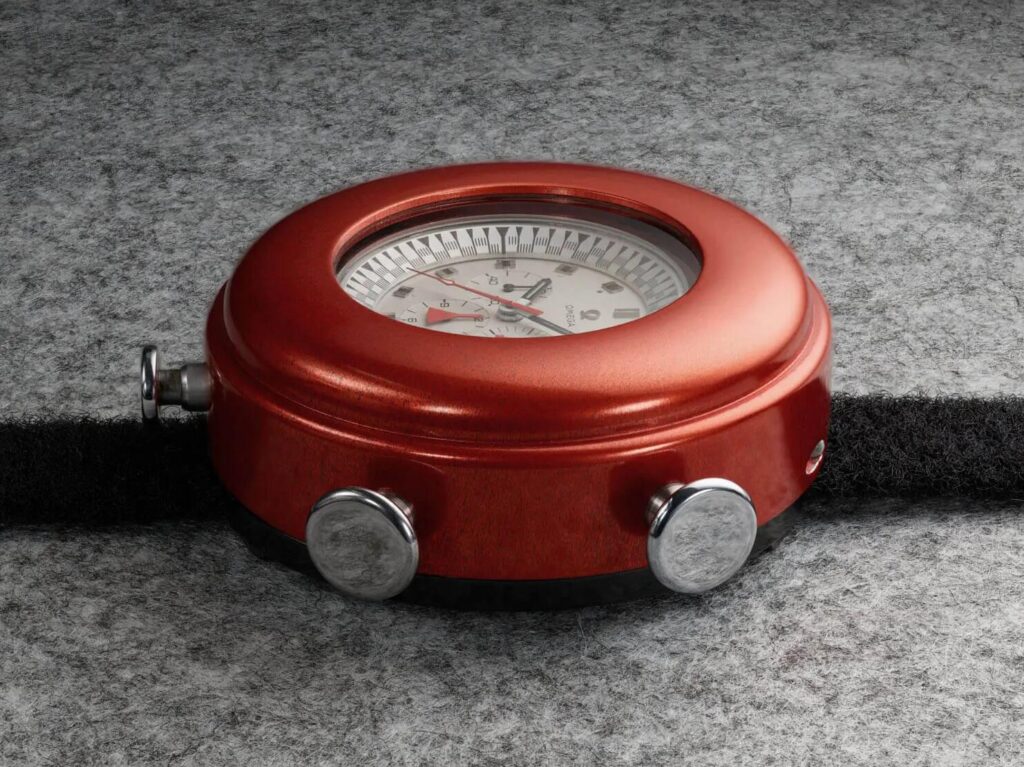
Omega Alaska II Project
The Alaska I Project was discontinued in 1971, but was revived in 1972 in the form of a second prototype, Alaska II (reference ST 145.022): the tachymeter scale gave way to a minute scale that was much more useful in space, the case shrunk to 42 mm (this time not made of titanium, but made of steel) was completely sandblasted to avoid any reflections. The red thermal shield and the white dial with zinc oxide coating were also on board again. Overall, the look of the Alaska II Speedmaster was much more similar to the “normal” Speedmaster series.
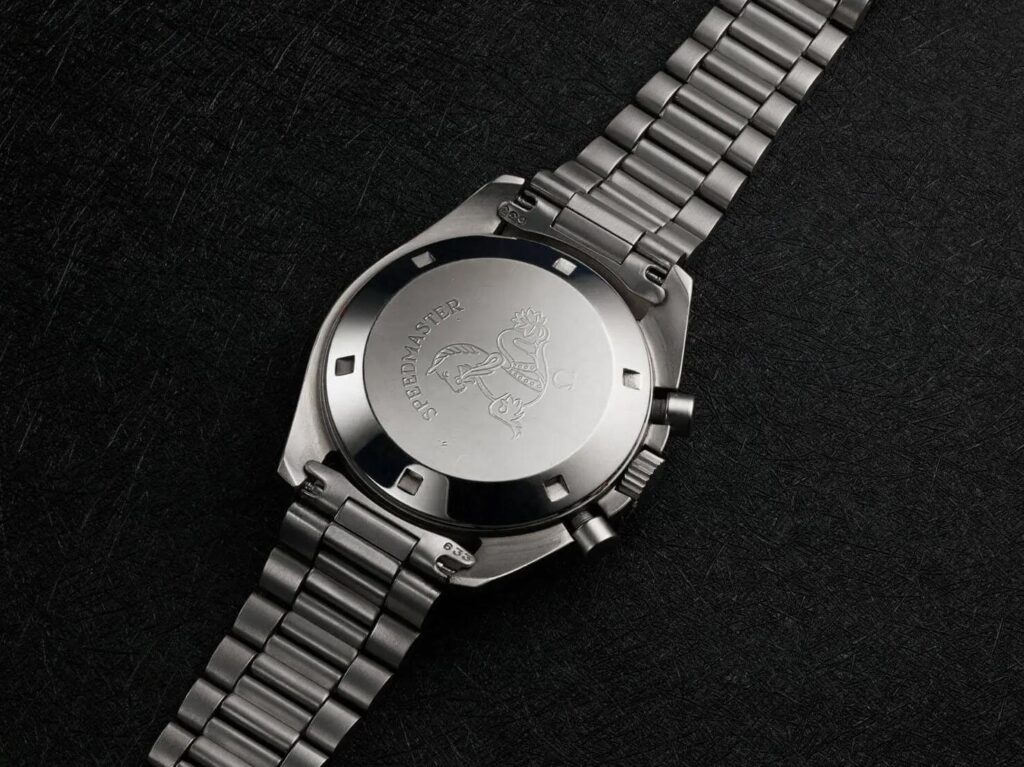
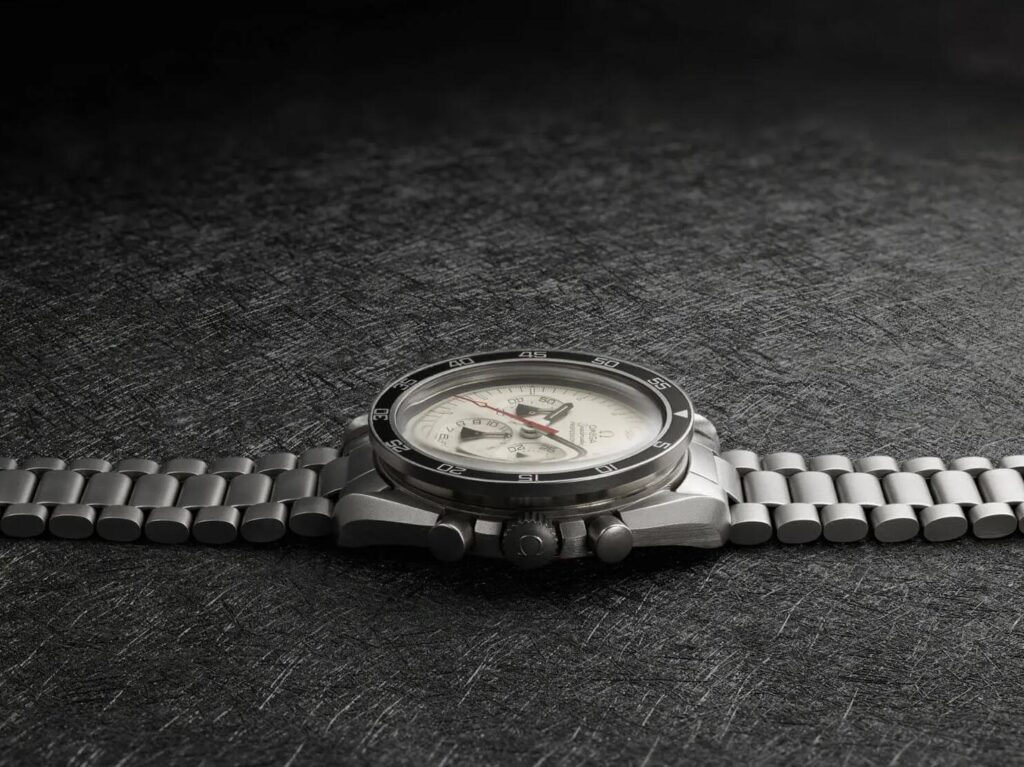
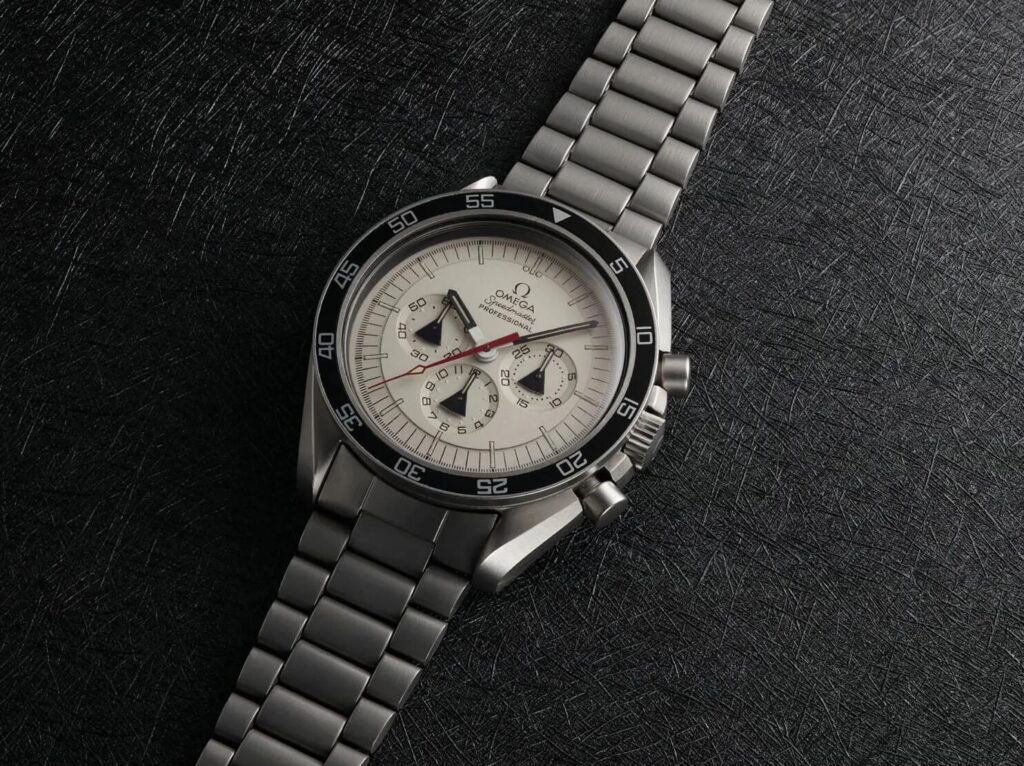
In 2008, Omega launched a new edition of the Alaska II Speedmaster limited to 1,970 pieces under the reference 311.32.42.30.04.001. Like the model, the Alaska II prototype, the case is made of stainless steel. The diameter also corresponds to the original at 42 mm.
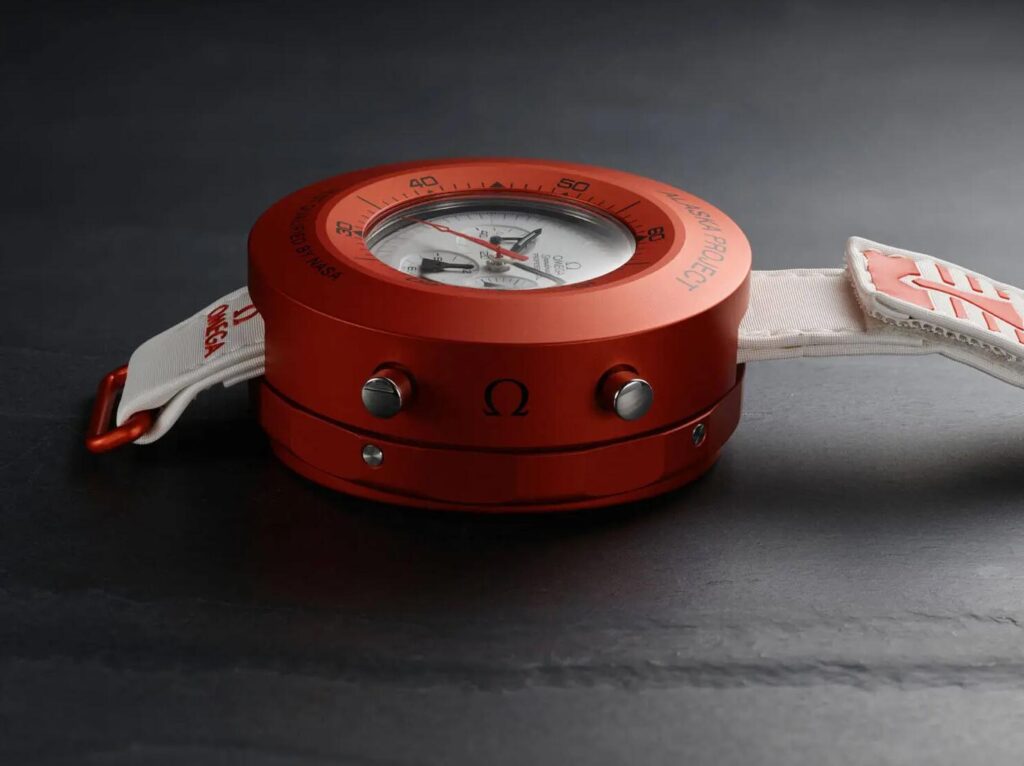
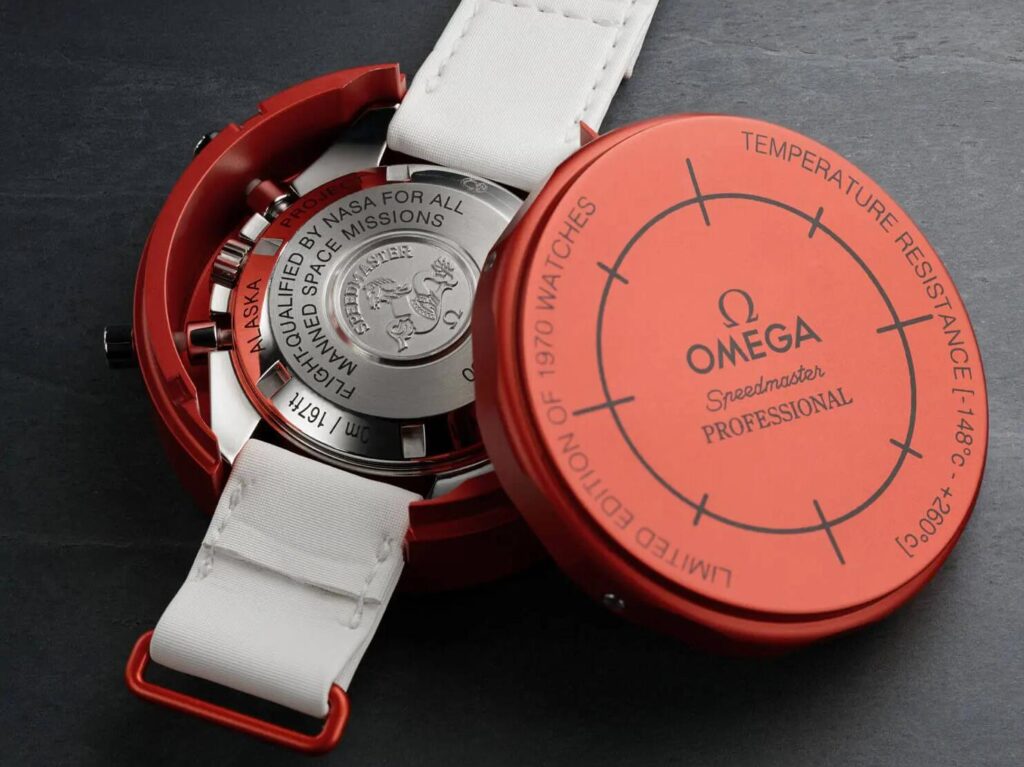
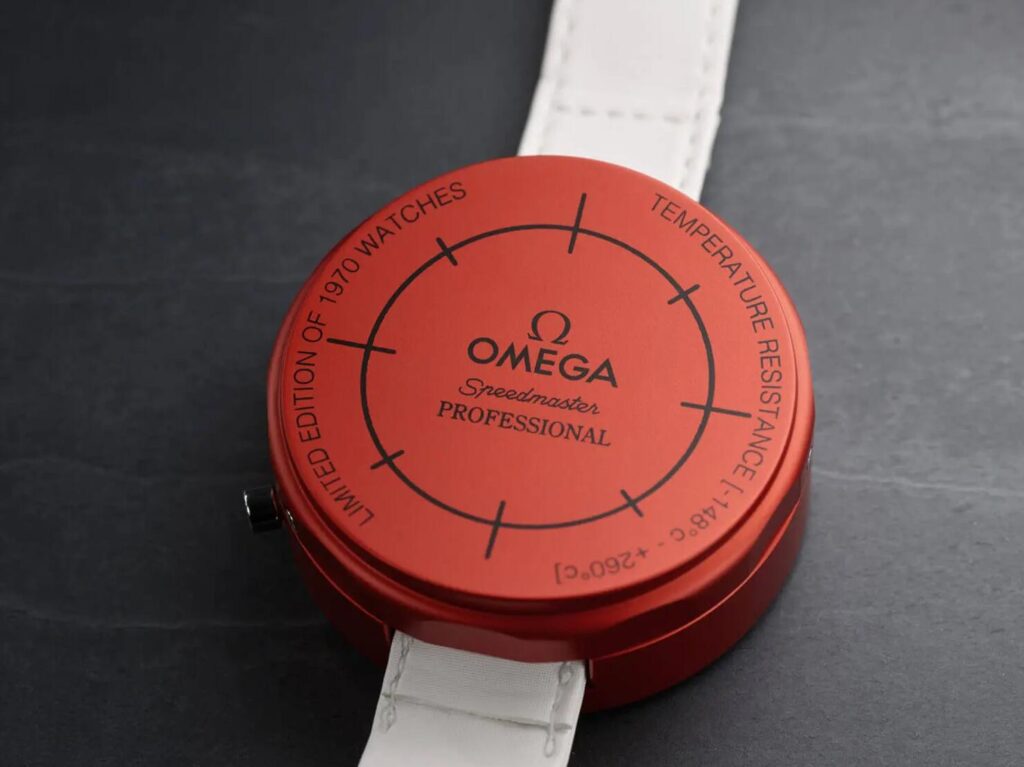
Omega Alaska III Project
With the Alaska III prototypes in 1978, Omega moved away from the idea of a white dial – the prototype came with a satin-finished stainless steel case with a diameter of 42 mm, hand-wound caliber 861 and a special feature that can only be seen on closer inspection: large, radially arranged Numbers on the totalizers, which were intended to improve intuitive readability during EVA (extra-vehicular activity, i.e. space walks).
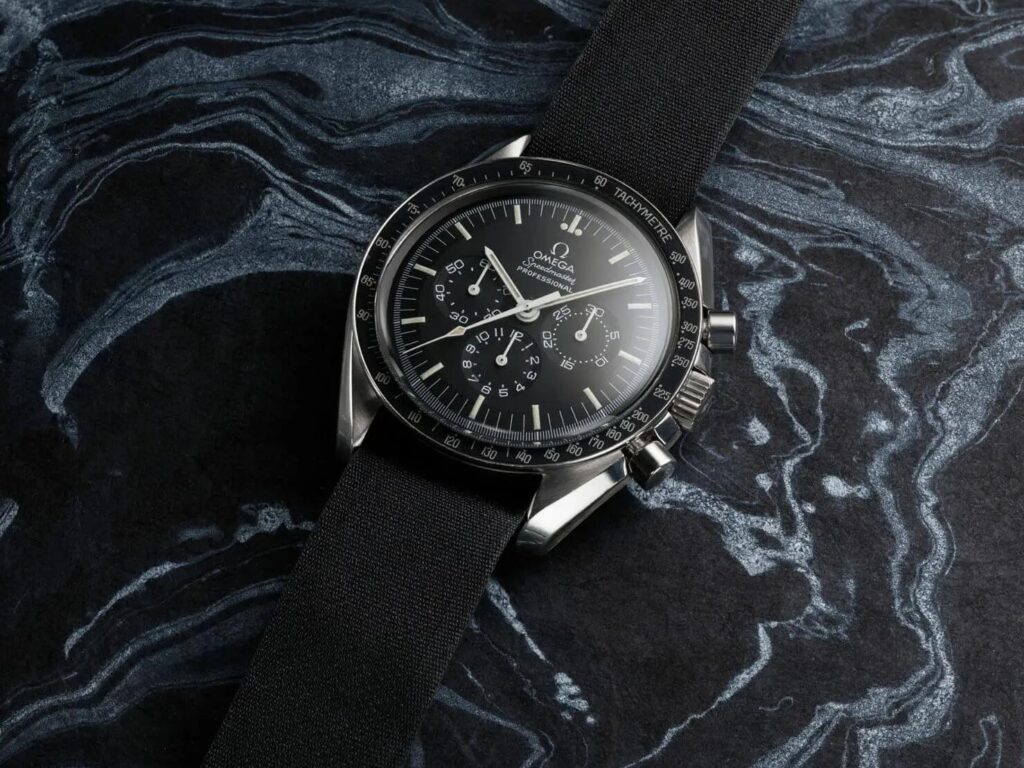
Several dozen of the Alaska III Speedmasters were ordered by NASA from Omega to provide timepieces to astronauts on the Space Shuttle program. Side note: Due to import restrictions, various components of the Alaska III Speedmaster had to be manufactured in the USA. The Swiss Made lettering is therefore missing on the Alaska III Speedmaster.